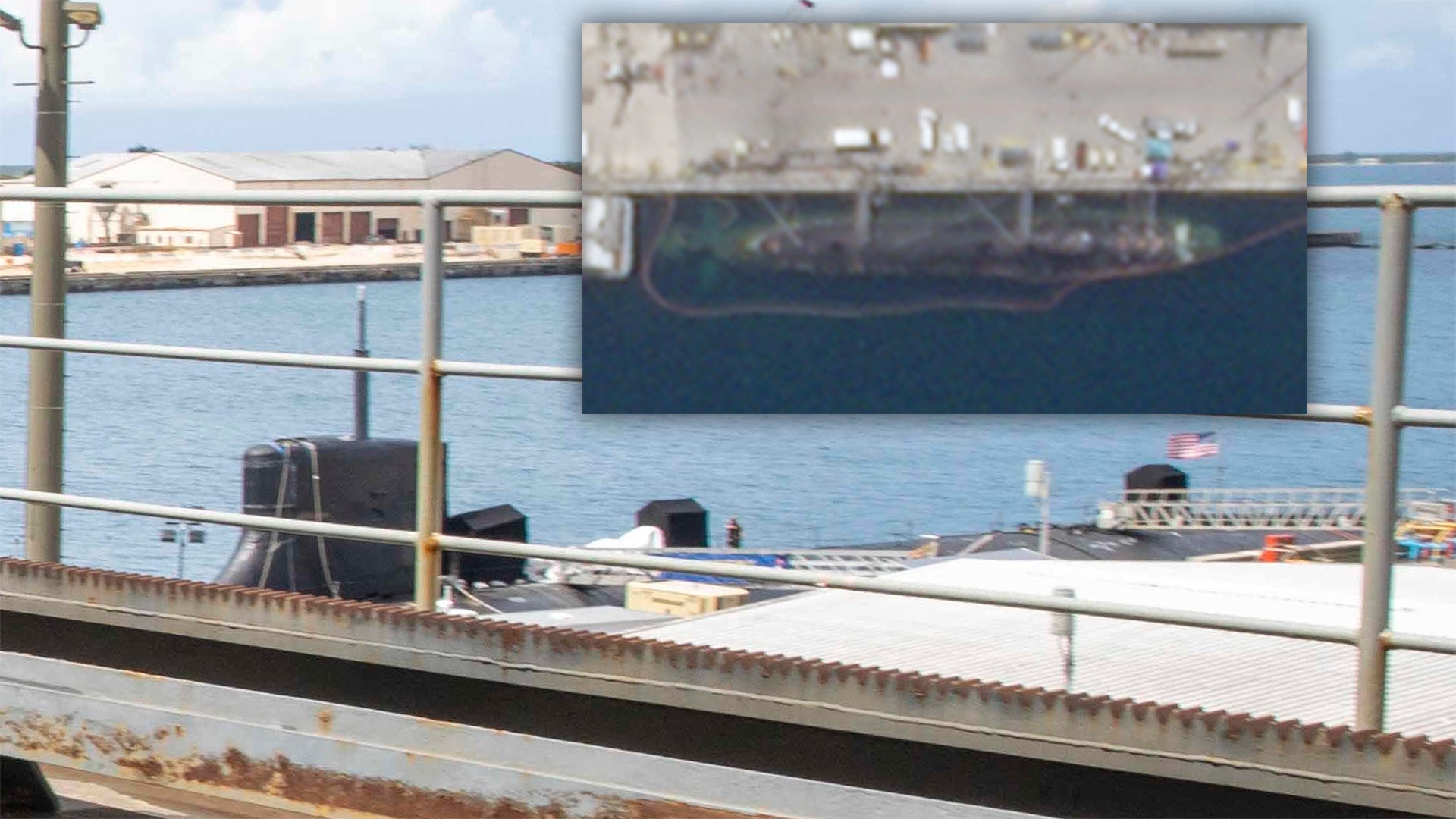USNI News has reported that the U.S. Navy has concluded the Seawolf class nuclear fast-attack submarine USS Connecticut struck an “uncharted seamount” last month, an accident that has left it stricken pierside in Guam. This comes as what appears to be the first official picture of any kind showing the submarine in Guam has emerged. Though this view of Connecticut is limited, it makes clear that the collision did not impact its sail, but questions remain about the state of the submarine’s bow, including the dome over its main sonar array and its hull below the waterline.
Navy Vice Adm. Karl Thomas, head of U.S. 7th Fleet, which has its forward-deployed headquarters in Japan, will now determine what disciplinary action might be taken as a result of the accident, which occurred on Oct. 2, reportedly in the South China Sea, according to USNI News. A previous report from the same outlet said that Commander, Submarine Force, U.S. Pacific Fleet (COMSUBPAC), was conducting its own investigation into the incident, and it is unclear what the status of that review is at present. The Navy still remains tight-lipped about the actual extent of the damage to Connecticut and how it plans to execute any necessary repairs.
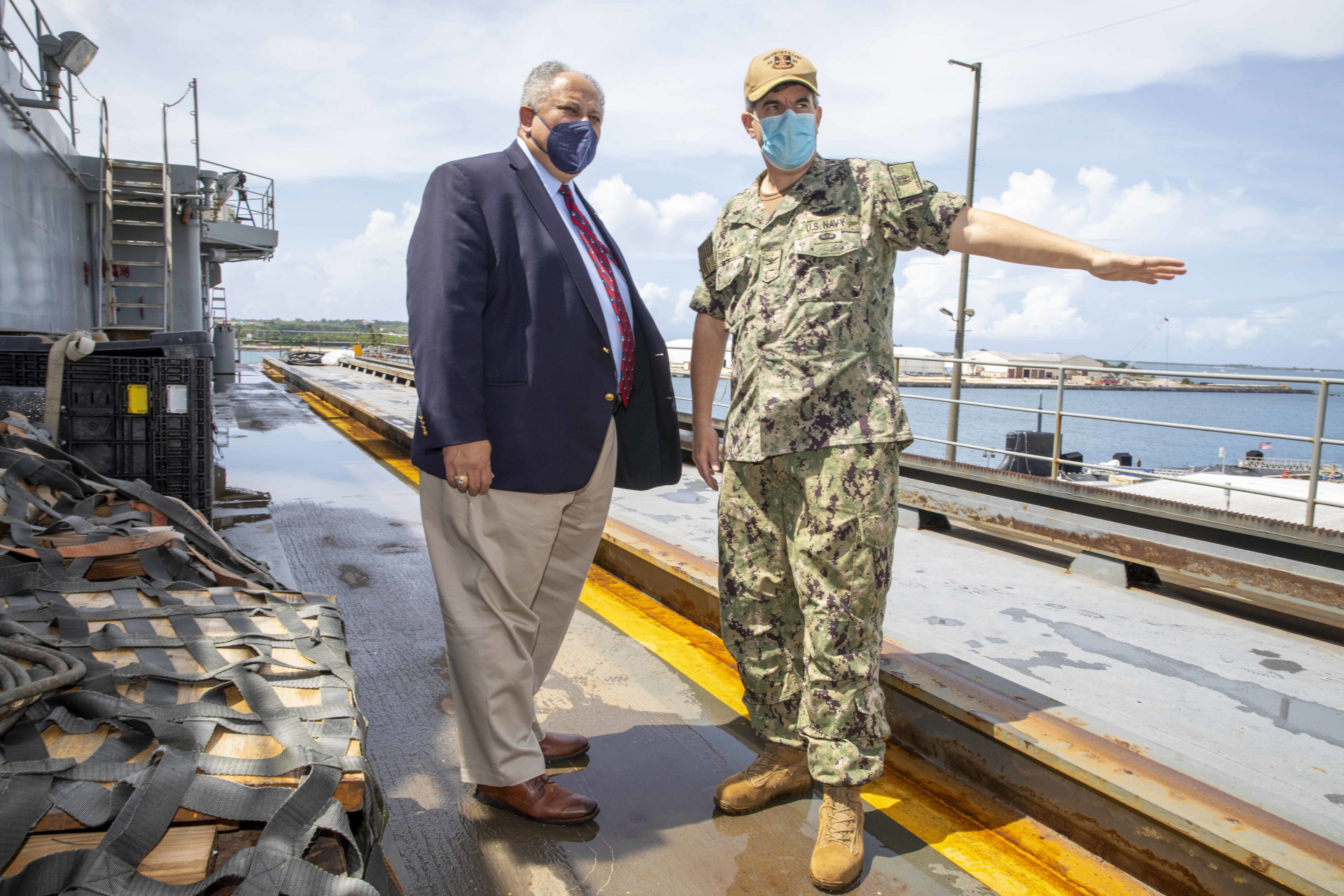
Thanks to a picture, seen above and dated Oct. 30, 2021, of Secretary of the Navy Carlos Del Toro being given a tour of the submarine tender USS Emory S. Land, we have now been given our first on-the-ground look at Connecticut. It’s not entirely clear when Secretary Del Toro first touched down on the island or if he is still there.
The Navy had announced on Oct. 21 that he would be making a tour of the Indo-Pacific region, with stops in Guam, as well as Hawaii, Japan, the Republic of Korea, and Papua New Guinea. The ostensible goals of the secretary’s travel in the region are “to discuss the importance of international defense partnerships, and reinforce the United States’ commitment to a free and open Indo-Pacific region” and to visit shore and afloat commands to better understand quality of life, and vital mission sets unique to the area of operation.”
Del Toro’s visit to Guam is not surprising in the slightest given the island’s immensely strategic position in the Western Pacific. It makes good sense that that the secretary would want to get a firsthand look and the latest update about the status of Connecticut, which is one of the Navy’s most prized assets, while he was there.
The portions of the submarine that are visible in this new picture, a crop of which is seen below, do not show any obvious damage. Lines of some kind are seen snaking into the boat via the top of the sail and small structures have been erected over multiple points on top of the hull.
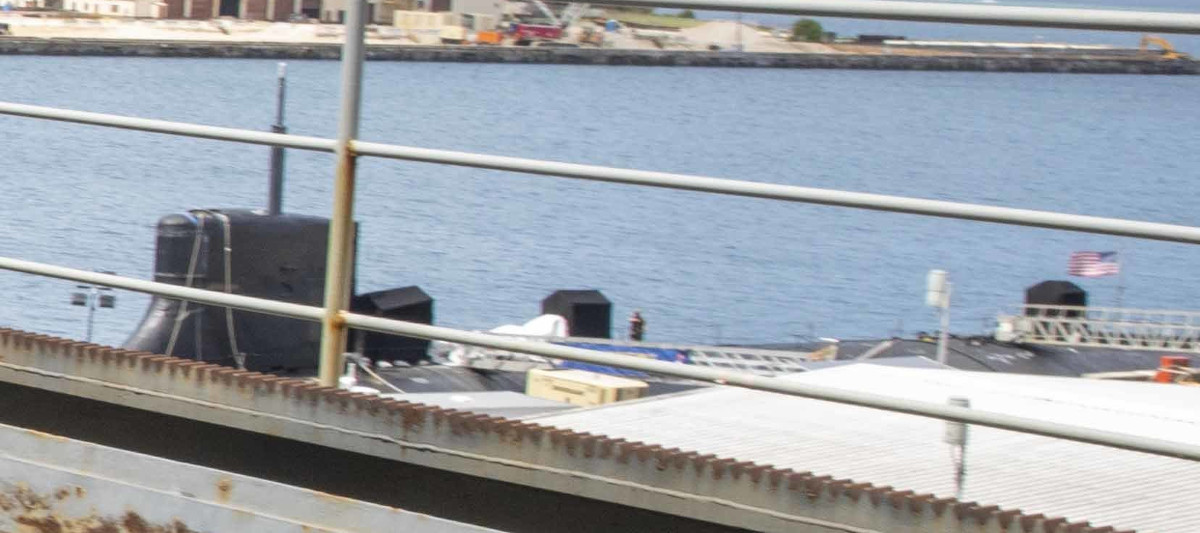
Though this view of Connecticut is limited, it does effectively confirm that the collision did not impact the sail, which would make sense if the boat ran into a seamount. The War Zone
had previously assessed that the sail had likely escaped largely unscathed based on satellite imagery from Planet Labs that we obtained and published last month, which provided the first real public look at the submarine since the accident. There is still no way to tell for certain how significantly the bow or the underside of the boat may be damaged.
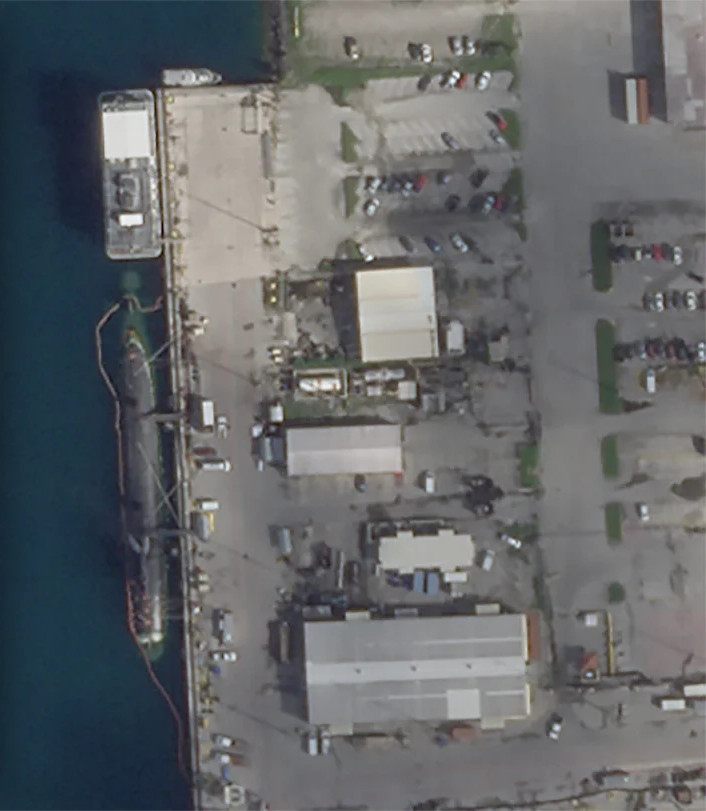
That same satellite imagery, dated Oct. 20, showed the Emory S. Land moored next to what appeared to be an improved Los Angeles class (688i) nuclear attack submarine in a different portion of Guam’s Apra Harbor. More recent satellite imagery that The War Zone has reviewed shows that, at least by Oct. 25, the submarine tender had moved across the harbor to be near Connecticut.
Satellite images of Connecticut in Guam do still continue to raise questions about potentially serious damage to the submarine’s bow, especially to the powerful sonar array inside it. Last week, retired Navy submariner Aaron Amick, a contributor to The War Zone, posted a video on his Sub Brief YouTube channel, seen in full below, where, upon closer inspection, he assessed that the “the [bow] sonar dome is completely gone” and noting the submerged array itself is visible in the Oct. 20 image. Amick said this aligned with the information he had recently received from sources on Guam, who had told him that the dome was ripped off in the collision.

Another satellite image of Apra Harbor that The War Zone obtained from Planet Labs, dated Oct. 25, could be interpreted to show the bow dome missing, but this could also be a trick of the light. Another shot, taken two days later, offers a view of the bow that is essentially similar to what was seen on Oct. 20.
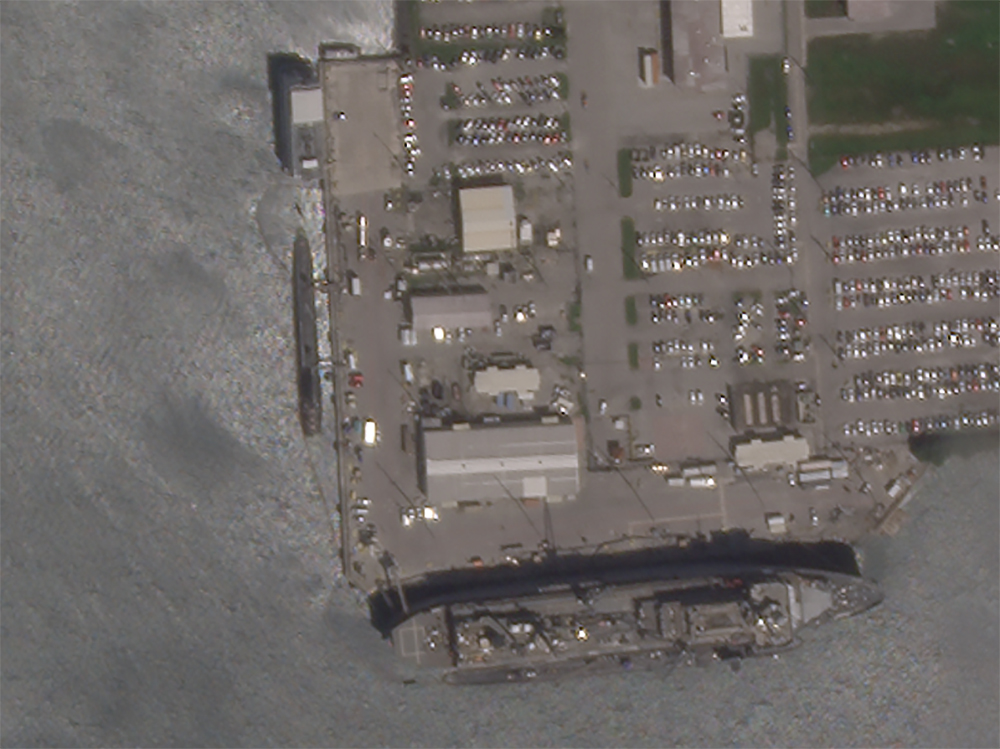
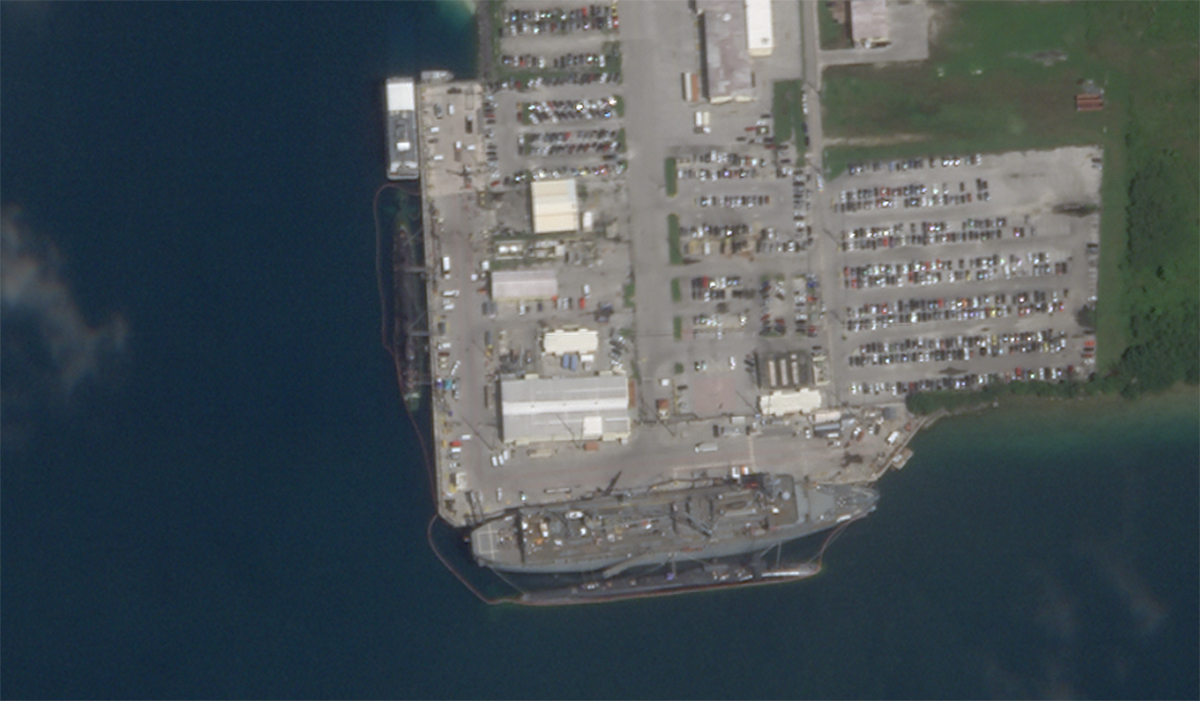
The main section of the bow sonar array on the Seawolf class submarines is a big sphere, which could match what we are seeing in the Oct. 20 and Oct. 27 imagery. How the array is installed on the submarine does make things potentially confusing since the general shape of the submarine’s bow would still be visible even if the dome was missing, whether it was torn off in the collision or removed as part of the damage assessment process after the boat arrived in Guam. Regardless, if the array itself is indeed visible, this could indicate that the front of the submarine was not seriously crushed in the accident, as has happened to other submarines that have hit seamounts or other parts of the ocean floor in the past.
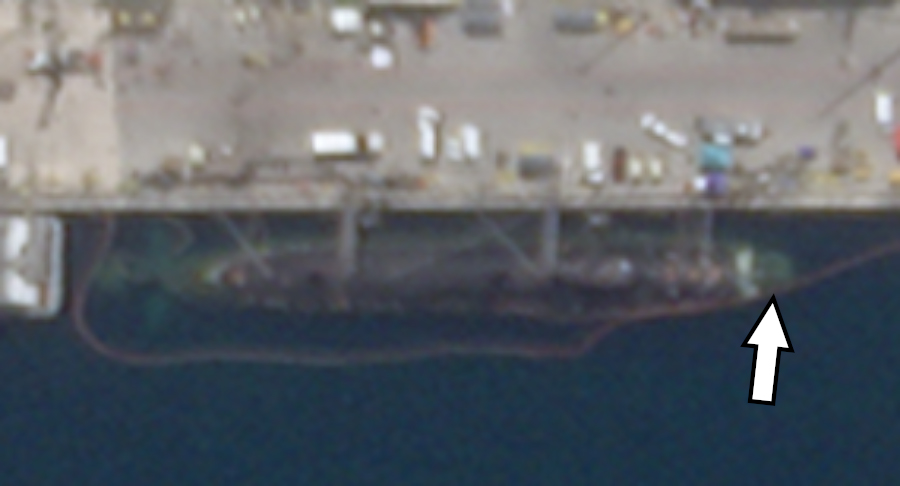
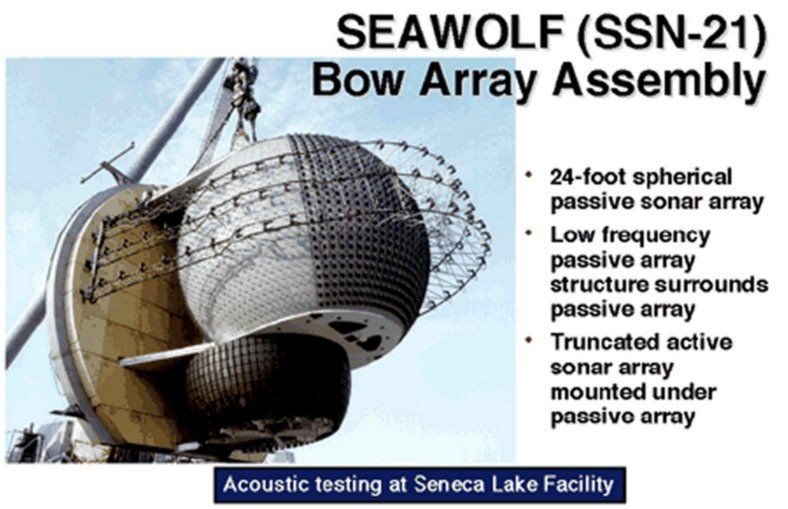
USNI News
also reported last week that the collision caused damage to the submarine’s forward ballast tanks, which forced it to sail all the way from the accident site to Guam on the surface. If true, this would have put the boat in a very vulnerable position and made it much easier for opponents, such as China, to track its movement. The Chinese government continues to make unsubstantiated allegations of a coverup regarding the incident, voicing particular concerns about the potential for radiation leaks, something the Pentagon has categorically denied.
Depending on the full extent of the damage, it is very possible that Emory S. Land, even with the assistance of teams from elsewhere within the Navy, will not be able to make the necessary repairs to Connecticut in Guam. As recently as last week, the service said the initial damage assessment was still ongoing in a statement to USNI News. From what we can see in the satellite imagery, together with other information that continues to emerge, it seems increasingly likely that the boat will have to be brought to another location for more extensive work since Guam does not have a large dry dock.
Pearl Harbor in Hawaii would be the most obvious choice of a place to conduct more extensive repairs, but it could take significant effort to get Connecticut there, especially if its present seaworthiness is at all in question. A semi-submersible heavy-lift ship, of the kind that has been used to move other Navy vessels involved in major accidents in the past, could be required to get the submarine out of Guam.
With only a trio Seawolf class submarines in service — only three were ever built — it continues to be highly likely that the Navy will feel compelled to get Connecticut fixed, regardless of the cost and time it might take to do so. These are highly advanced submarines that provide unique capabilities widely understood to be optimized for intelligence-gathering activities, among other specialized missions. The third and final Seawolf, the USS Jimmy Carter, is actually the lone example of a distinct subclass with a 100-foot long Multi-Mission Platform (MMP) hull extension and other modifications that allow it to perform underwater espionage operations, as you can read more about here.
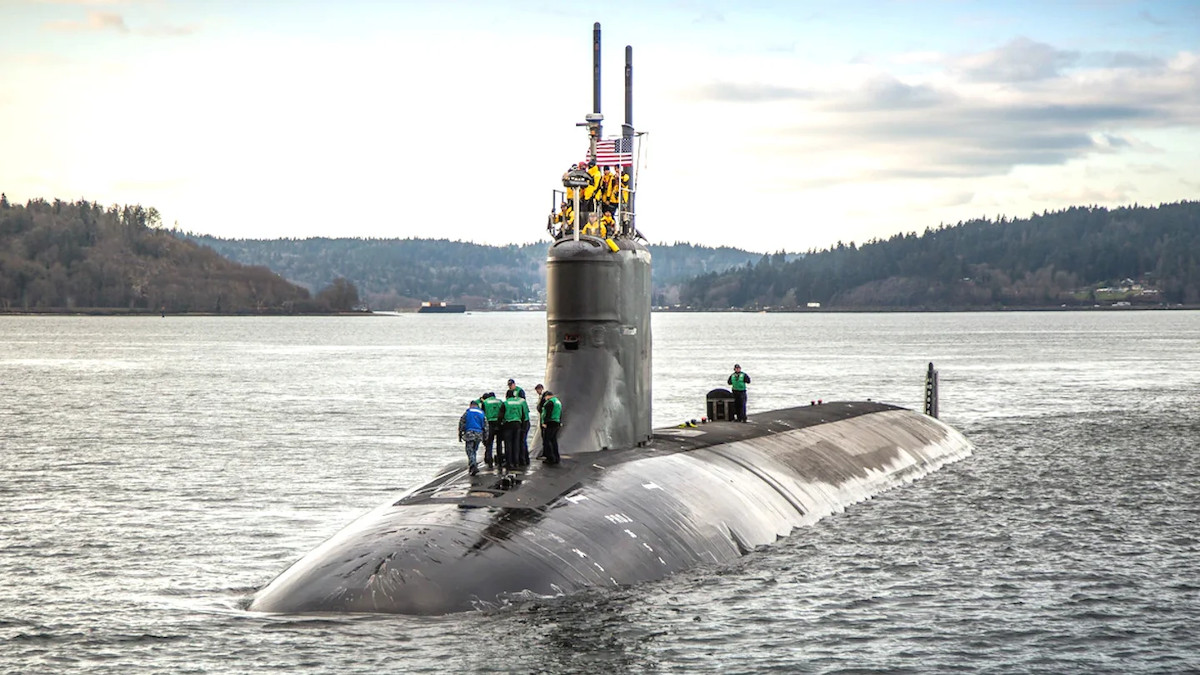
At the same time, this reality has raised questions about potential cascading issues with regard to available space for repairs in Navy-owned shipyards. For years now, the service has been struggling to eliminate maintenance backlogs in public shipyards that have led to significant delays in getting submarines and surface ships back to the fleet.
“Right now, it’s [Connecticut] in Guam, that’s public record, there is no dry dock in Guam, hopefully a sub tender can do the work, but that remains to be seen,” Jay Stefany, the Acting Assistant Secretary of the Navy for research, development, and acquisition, told members of Congress during a hearing last week. “It just shows how … the world gets a vote and things change and unexpected incidents create more demand for repairs. … The attack subs have always been the poor cousin in the public shipyards in terms of getting priority, but we know particularly a Seawolf class submarine is extremely valuable in terms of the mission in that part of the world.”
For now, at least, Connecticut continues to sit pierside in Guam, as the Navy keeps working to determine what steps it will need to take next.
Contact the author: joe@thedrive.com
